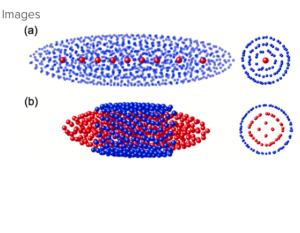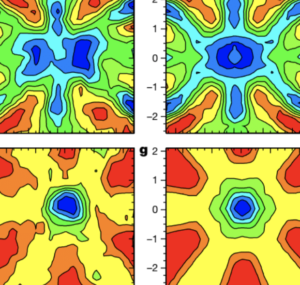
Storage and cooling of thorium ions from radioactive decay
Sympathetic cooling of Th3+ ions is demonstrated in an experiment where 229Th and 230Th are extracted from uranium recoil-ion sources and are confined in a linear
Time is one of the most basic physical units and probably the one we all have most experience within daily life. The most precise way of measuring time is by using so-called atomic clocks, which make use of extremely well determined quantum levels in the electron shell of atoms or ions to stabilize the “ticking”. These precision clocks have tremendous technological relevance; they constitute the backbone of our satellite-based navigation systems as well as our synchronized digital data traffic.
The Thorium nuclear clock project aims to implement a new type of clock – a nuclear clock. In contrast to electron shell levels used in atomic clocks, it uses quantum states within the atomic nucleus of Thorium-229 as a “ticking” reference. As the nucleus is a thousand times smaller than the electron shell, it reacts much less to perturbations caused by external fields or forces, so the nuclear clock is expected to be dramatically more robust than the current atomic clocks. Furthermore, the nuclear clock transition frequency is determined strongly by all fundamental forces acting inside the nucleus and hence can be used to probe these. A temporal or spatial variation of these forces could be a signature of the existence of dark matter, probably the universe’s greatest standing mystery.
Within the ERC synergy project, we will construct three complementary types of Thorium nuclear clocks and compare them amongst each other (and with conventional atomic clocks) to search for variations in the fundamental forces of nature.

Sympathetic cooling of Th3+ ions is demonstrated in an experiment where 229Th and 230Th are extracted from uranium recoil-ion sources and are confined in a linear

Our teams have been busy developing the path towards a Nuclear clock. We are as excited to announce three publications
In April members of the LMU team were visiting the labs at the PTB site in Braunschweig.
Last week our team in Vienna was very excited to receive their new micro pulling down crystal growing machine.
After a long journey, halfway across the globe, the tiny 1 mm3 Thorium doped calcium fluoride optically polished cubes have safely arrived in Japan.
published in arXiv, March 2021
published in Nature Reviews Physics, February 2021